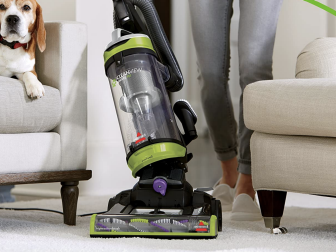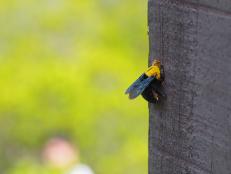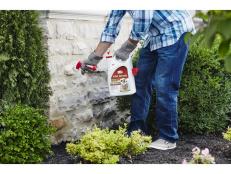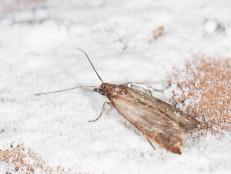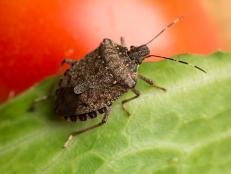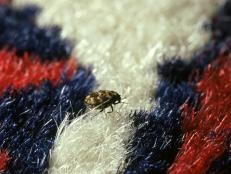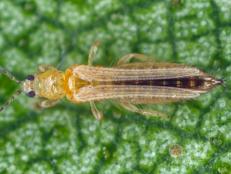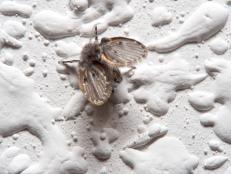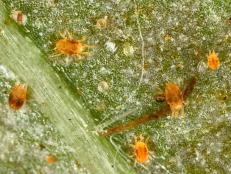How to Get Rid of Fleas in the Home
Nix the itch. Learn how to identify and remove flea infestations from your home and pets.

Fleas are common and nearly unavoidable if you have a pet that goes outside or interacts with other animals. Infestations can happen fast, so if you see signs of fleas, chances are that the population is larger than you think. To say that fleas can be invasive is quite the understatement; females are capable of laying upwards of 50 eggs per day, which is why it's important to mitigate the issue before it escalates. Learn how to identify fleas and their eggs and larvae, and determine how to treat them once they’re on your pet, in your home and around your property.

GettyImages/Rebecca Smith
What Do Fleas and Flea Eggs Look Like?
Flea eggs look like grains of rice but are much smaller, more comparable to the size of grains of sand or salt. They are oval-shaped and usually white (or off-white, and occasionally translucent).
Once hatched, the larvae themselves are slightly longer (upwards of 5 millimeters) but still semi-transparent and difficult to see.
The full-grown fleas themselves are jumpy little guys. They too can be hard to find on your furniture but are more easily tracked by signs of irritation on your itchy pet (such as a red and bumpy area on the belly, groin, legs or base of the tail). If you don’t see actual fleas attached to the pet, you may be able to spot flea dirt, which presents as dark brown or reddish "dirt" spots, as it's composed of dried blood from the host and feces from the flea.

How to Find Fleas
You might first be clued in to a flea situation if your pet is suddenly chewing or scratching. You might also notice bites on yourself or your kids if you spend a lot of time snuggling in areas you share with your pet. And if fleas are on your pet, they’re definitely hiding elsewhere in and around your home.
Start by checking the humid, warm, cozy areas. Fleas hide and breed in spaces that they perceive to be undisturbed, like in crawl spaces, couch cushions and inside dog houses and cat enclosures. If your pet has fleas, check all pet bedding, furniture bases, sofas and carpeting.

GettyImages/Sally Anscombe
How to Get Rid of Fleas on Pets
Start by treating your pet to put them at ease. Bathing and combing can help reduce fleas' presence; however, "there is no 'one size fits all' approach," says Dr. Jamie Richardson, chief of staff at Small Door Vet. "Your vet can help you select the preventative that is best because some pets cannot tolerate oral medications due to GI upset or topical products due to skin irritation." If your pet is active outdoors and with other animals, consider a two-step approach. "You might consider both an oral preventative (that won't be washed off with bathing/swimming) and a flea- and tick-repelling Seresto collar."

GettyImages/FluxFactory
Sourcing any medicine directly from your vet or trusted supplier will also decrease the likelihood of receiving over-the-counter products that are old (reduced efficacy) or counterfeit. "Only purchase these products through your vet, Chewy.com or your local pet store if a prescription is not required. You should never purchase these products off Amazon."
Dr. Richardson also warns of natural treatments. "Many 'natural' options such as essential oils can actually be toxic to your pet, and most do not really work." So, before you test a natural remedy that you already use to treat itches and rashes on your own family, think twice.
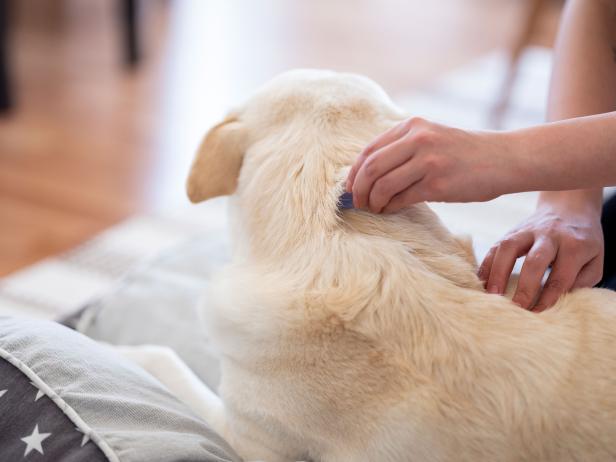
GettyImages/temizyurek
How to Get Rid of Fleas on Furniture
Removing fleas that live indoors requires deep cleaning on all furniture, dog and cat beds, sheets and carpets. Launder anything that’s easy to wash, and move furniture to thoroughly vacuum the underside and around the legs. Insecticide sprays that kill fleas are available but not always safe for use indoors in high volumes and not always effective since fleas tend to hide.

GettyImages/Melissa Ross
Vacuuming is the easiest line of defense because you can capture not only the eggs and adult fleas, but the pesticide-resistant larvae, too. After every vacuuming, thoroughly wash the canister or discard any vacuum bag into an outdoor garbage can. It's not likely that you’ll get all fleas with one vacuum treatment, so hang in there for the long haul and plan to treat all areas every other day for two weeks. If you are still finding eggs and fleas, consider steam cleaning as the next treatment option.
Can You Get Rid of Fleas Outdoors?
Your 1:1 battle with a flea infestation might come to a head once they’re inside your house, but fleas thrive outdoors on wildlife and feral hosts. If you have an ongoing issue managing fleas on your pets, also check your backyard for signs of infestation. The easiest way to check without consulting a pro is to don a pair of tall white socks and stroll through the grass. Now that you know what fleas and their eggs look like, it'll be easier to spot them as they gather on the outside of your socks.
If you observe a lot of fleas or eggs on your socks after your jaunt, consider calling a lawn expert who can help manage the infestation safely, so you and your pets can stop tracking them into your home.

Emily Fazio
More Tips for Pet Owners
The Best Vacuums for Cleaning Up Pet Hair
Browse our top list of vacuum cleaners, from handhelds to uprights, that will de-shed your home with ease.
How to Remove Pet Stains From Carpet
Learn how to clean some of the most common pet messes without too much stress.
10 Dog Grooming Essentials Under $40
We all love our pets and want them to be clean, confident and full of charisma.

.-Battle-on-the-Beach-courtesy-of-HGTV.-.jpg.rend.hgtvcom.196.196.suffix/1714761529029.jpeg)




